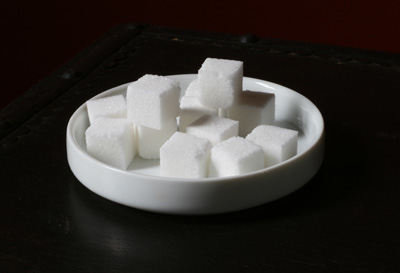
Aug 19, 2011 • 4 min read
Is Sugar The New Crack?
Posted in:
 Two months ago, at the beginning of the summer, I wrote about the sugar content of sports drinks in this blog. After the blog ran, we conducted a survey of TeamSnap users, asking you to guess the number of teaspoons of sugar in a 20-ounce bottle of Gatorade (answer: 9 teaspoons!). Forty percent of respondents guessed 6 teaspoons or less, vastly underestimating the amount of sugar in a bottle of the most popular sports drink on the market.
Two months ago, at the beginning of the summer, I wrote about the sugar content of sports drinks in this blog. After the blog ran, we conducted a survey of TeamSnap users, asking you to guess the number of teaspoons of sugar in a 20-ounce bottle of Gatorade (answer: 9 teaspoons!). Forty percent of respondents guessed 6 teaspoons or less, vastly underestimating the amount of sugar in a bottle of the most popular sports drink on the market.
This got me thinking about kids’ sugar intake in general. What else do my kids eat (or what do I eat, for that matter) that has a higher sugar content than I think–and why is sugar such a bad thing, especially for young athletes?
Let’s tackle the second part of that question first. At the core, high sugar intake contributes to hormonal imbalances and abnormalities in insulin, a hormone that helps the body process sugar efficiently. This imbalance then causes the brain to shut down production of another critical hormone — leptin — which regulates appetite.
According to Dr. Larry McLeary, retired chief of neurosurgery at Denver Children’s Hospital, “when leptin is suppressed, appetite increases and the body overeats. Coincidentally, the nervous system becomes less active, producing less energy and activity, exacerbating the situation.” Ultimately, the result can be Type 2 diabetes or a pre-diabetic condition called insulin resistance syndrome.
So, you say, “my child is active–an athlete even–and this won’t affect him or her.” Guess again. High levels of sugar reprogram your child’s brain without your (or your child’s) permission. Sorry, mom and dad, this is one thing you CAN’T control.
Sugary drinks and treats not only don’t satisfy your child’s hunger, they actually increase his or her appetite. And because drinks and food high in sugar supply calories above and beyond what kids need to satisfy hunger, well, you see where this is going.
It sounds a lot like an addiction to me.
Registered dietician, Summer Lamons, agrees. “Especially when combined with fat and salt, sugar is highly addictive. The combination triggers the opiate receptors in our brain similar to when someone drinks alcohol or takes hard drugs, such as heroin or cocaine.”
Wow.
A study conducted by the Scripps Research Institute in Florida confirms Lamons statement.
No problem in my house, though, I thought. We eat healthy: lots of complex carbohydrates, vegetables, low-fat protein, monounsaturated fats (seeds, nuts, avocados, and olive oil), and we drink plenty of water. Sure, my kids eat some energy bars now and then. But those are good for them, right? Wrong.
Check out the sugar content in an average bar, most of which average between 48 and 65 total grams. On the low end? 13 grams of sugar (Luna Lemon Zest, 48 grams/13 grams sugar). On the high end? 28 grams of sugar (Power Bar Performance Energy Cookies and Cream, 65 grams/28 grams of sugar). That’s anywhere between 27 and 43 percent sugar! Some bars even have high fructose corn syrup as the sweetener (I threw the box of those bars–my son’s favorite–in the trash last night. He will NOT be happy when he gets home tomorrow).
Compare that with a Snickers bar: 58.7 grams total weight. Sugar? 30 grams. Fifty-one percent sugar. Not much different than that high-end energy bar. And cheaper!
So what should we be giving our young athletes to fuel and recharge them correctly? I’ll talk about that in next week’s blog.
Until then, remember: too much sugar rewires your child’s brain and makes her brain addicted to it. Really, sugar is no better than crack.
 Emily Cohen is a freelance writer living in Berkeley, California. She is the mother of a son and a daughter who both play multiple sports. She has been a team manager for her children’s soccer, baseball and softball teams.
Emily Cohen is a freelance writer living in Berkeley, California. She is the mother of a son and a daughter who both play multiple sports. She has been a team manager for her children’s soccer, baseball and softball teams.
